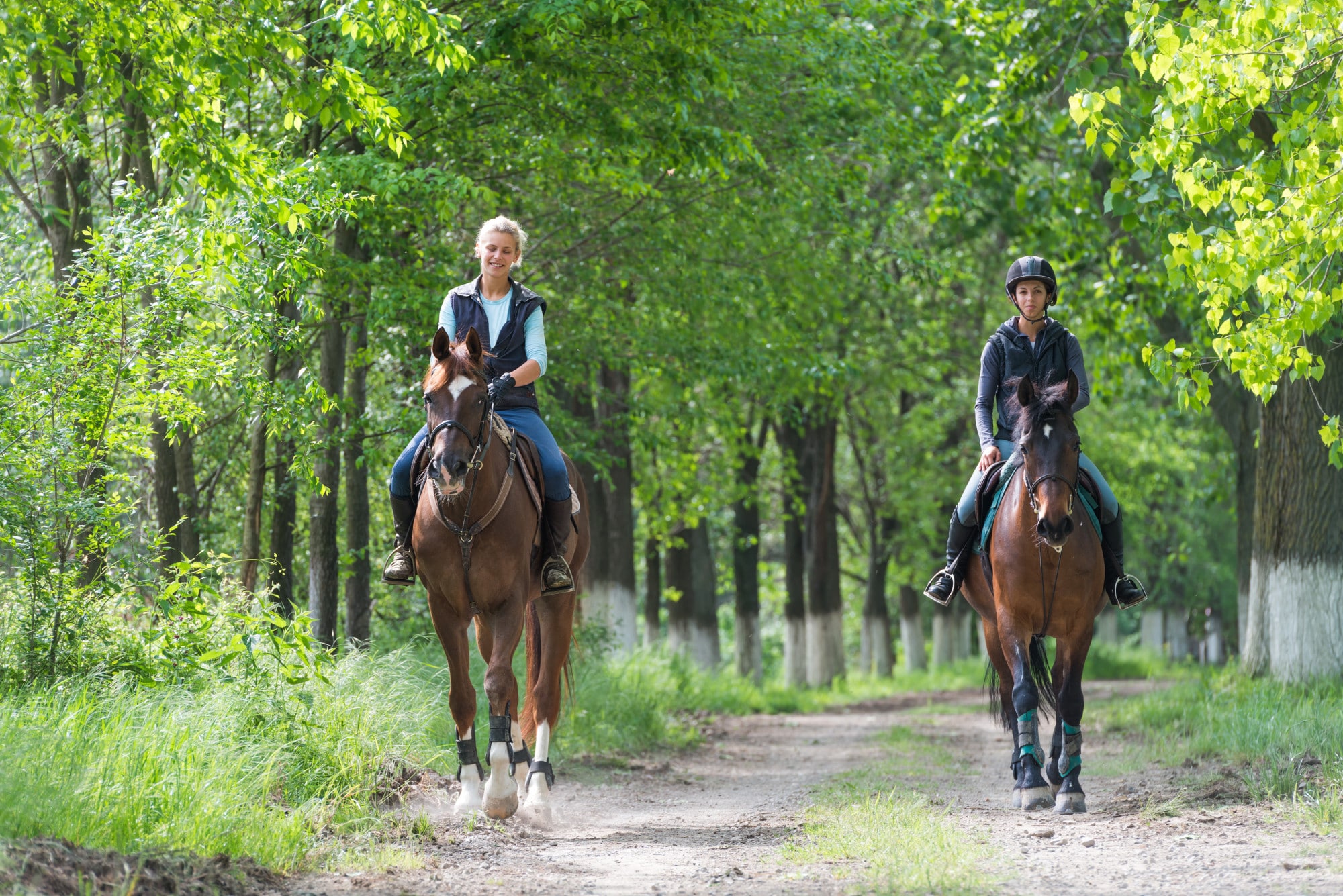If you’re lucky enough to know what it’s like to fly through a field, wind in your hair, with a 1,000-pound animal carrying you like you’re light as a feather, then you know the appeal of horseback riding. After all, there’s nothing that gets as close to the feeling of flying as galloping on horseback.
Horseback riding can be liberating, exhilarating, and for some, a lifelong passion. But like almost every hobby, especially one so fast past and exciting, it doesn’t come without some risks.
As much as we’d like to avoid thinking about it, a single bad fall off a horse can leave you with some serious injuries. Not only that, horses are animals (ones that average 1,000 pounds!) and can be very unpredictable.
It’s best to know how to stay safe before taking a seat in the saddle so you can avoid injury to yourself, stress to the horse, and an expensive trip to the ER.
Read on to learn our top 3 horseback riding safety tips!
Staying Safe While Horseback Riding
Just like you wouldn’t head straight for the black diamond ski run as a beginner, or get into the driver’s seat of a racecar without some basic training, you shouldn’t get on a horse without going over some important safety tips.
As with any sport or hobby, there are risks involved and only you can know when something doesn’t feel right. Don’t hesitate to go to an urgent care center if you’re seriously hurt or unsure if you might be.
That said, here are 3 main things to keep in mind before you hop on.
1. Choose Your Horse Wisely
Just like humans, horses come in all sizes, ages, temperaments, and energy levels. The safest way to ride as an inexperienced rider is to choose a horse that suits you!
All kinds of things factor into how a horse behaves both in the ring and on the trail, including age, breed, and personality. For example, a young retired racehorse is likely to be much more unpredictable and high-energy than a 25-year-old horse with many years of experience being ridden.
But age and breed are only part of the equation. Just like us, some horses are naturally more docile while some are ready to stir things up. If you’re inexperienced, ask your trainer or guide to pair you with a horse that’s easy-going and mild-mannered. You’ll be much less likely to run into trouble with a good match.
2. Always, Always Wear A Helmet
Even if you get the most chill horse in the stable, accidents can still happen. While on the trail, you and your horse could encounter a wild animal or the horse could be spooked by a weird-looking branch (no one said they were always logical!). Although rare, horses also occasionally lose their footing and trip. All of these situations can end with you on the ground.
Falling off a horse can be not a big deal as long as you are wearing a helmet and the appropriate riding attire, including boots and long pants. It’s like riding a bike — wear a helmet and your chances of getting hurt are drastically reduced.
3. Remain Aware and Alert When You’re Off The Horse, Too
Just because you’ve dismounted and are no longer on the horse, doesn’t mean you should let your guard down. In fact, many injuries with horseback riding occur when the rider isn’t paying attention while leading the horse, grooming, or saddling.
Always stay very close behind a horse with one arm guiding you around the back so the horse knows you are there. This will make it less likely for a horse to kick you.
Remember: horses are skittish and do not like surprises! Never sneak up on a horse or make sudden, loud noises. Remain aware of the horses’ body language when grooming or leading and don’t put yourself near where a horse could kick you.
Final Thoughts
Horseback riding is a fun and safe activity if done with these safety tips in mind! A good trainer or guide will help you stay safe. Never be afraid to ask questions if you’re unsure what to do in any situation.
It’s also smart to know where your nearest urgent care center is just in case. Happy riding!

